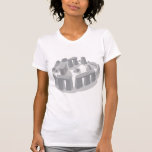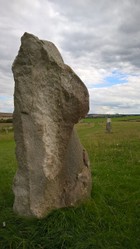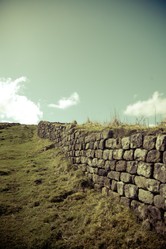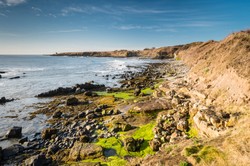One of the biggest issues in British archaeology has been the ethnicity of the Britons. For many years we were blighted by the belief that incoming populations massacre or drive out the populations before them. Cultural change was seen as a sign of ethnic change, a belief that has been compared with thinking that the presence of an IKEA furniture store indicates a Swedish invasion! We were aware that there were incoming populations arriving in Britain in prehistoric times and it was customary to think that any cultural novelty indicates newcomers.
In the past we were beset by classical snobbery, the belief that until the Romans arrived the Britons were primitives just awaiting the civilising power of Rome. Other civilising features were believed to come from the Fertile Crescent running from Egypt to Mesopotamia, a belief that led some scholars to the belief that Stonehenge was produced under the leadership of an incoming elite from the Mediterranean, an idea now comprehensively debunked.Ancient Britons in this view were mere savages running round in skins.
This incoming culture view overlooked the vast trading networks which existed in Stone Age Europe and the cultural contacts and exchange that they brought.Archaeological sites routinely reveal items from far away,a fact that indicates trade and movement of people. Bones reveal that people died in places where they were not born and raised, again indicating a mobile population. Stone Age people were as intelligent as we are, so they could learn new ideas.
What has this to do with Blick Mead? Simple. Archaeology reveals that the site was a place of ritual worship right through from the Mesolithic period, when Britain was first re-inhabited after the Ice Age right through into the Neolithic period and into the Bronze Age, when a copper alloy dagger was ritually deposited in the spring. Even an Anglo-Saxon brooch was found. Continuity of use through thousands of years indicates that there was cultural and probably ethic continuity between the Neolithic Britons and their Mesolithic forebears. There is evidence of cultural influences from other parts of Britain. A stone mesolith, known as a Horsham point, from a hundred or so miles away was found, but it was made of slate, of a kind that is unknown in the Salisbury Plain region, either as bedrock or glacial erratic, but comes from Cumbria over two hundred miles away. So not only is there evidence of cultural continuity between Mesolithic and Neolithic Britain, but of a widespread shared culture throughout the land,a culture that spread through trade into Europe. There were newcomers, who brought farming, but they seem to have integrated peacefully.







 TheThousand Year Gardenon 11/26/2025
TheThousand Year Gardenon 11/26/2025
 Women of the Gospelson 10/11/2025
Women of the Gospelson 10/11/2025
 Religious Gardenson 08/25/2025
Religious Gardenson 08/25/2025
 Doctor of the Church: John Henry Newmanon 08/03/2025
Doctor of the Church: John Henry Newmanon 08/03/2025



Comments
They don't. Most were dispossessed. Somebfled to Constantinople where they joined the Varangian guard, but in thrbearyb1200sbthe Varahgians were massacred bybinvading Normans.
Thank you for your comment in answer to my previous observation and question.
Your comment two boxes down advises us that "Hereditary peers inherit their titles, and descend from either ancient Norman families or from families ennobled by subsequent monarchs."
Where do ancient Anglo-Saxon families from pre-Norman Conquest times fit peerage-wise?
A princess or Prince will hold a royal duke or duchess rank. Hence Prince Harry is the Duke of Sussex, but his wife, Megan, is not a princess, as she is not royal, but is simply a duchess.
There is a distinction between hereditary peers and life peers. Hereditary peers inherit their titles, and descend from either ancient Norman families or from families ennobled by subsequent monarchs, and they came either from Tudor mercenary captains or families who did well out of robbing the church at the Reformation. Life peers are people who have a title only for life, and they are ennobled business people or politicians retired from office but deemed to have more to offer. They join the House of Lord's, the upper chamber of our bicameral legislature.
The female for baronet is a dame, the female for lord is lady. A viscount's wife is s viscountess. An earl's wife is a countess. I forget one rank between earl and duke, which is a marquis, the female equivalent being a marchioness. A duke's wife is a duchess, and the female equivalent of a Prince is a princess.
A baronet is a strange rank, for its holders are peers, but are officially commoners.
The computer crashed before I could continue another component to the question below.
There perhaps is a difference in invoking "ordinary" -- ;-{ -- duchesses and dukes and royal duchesses and dukes.
Might a royal duchess and her duke be monikered Princess and Prince?
Thank you for your comment below in answer to my previous, same-day question.
The female equivalents of the peered titles are not as well known among Unitedstatesian west-ponders, who are without literal, official royalty ;-D!
So here goes. Is it baronetess with a baronet, viscountess with a count, marchioness with a marquis and duchess with a duke?
The order of the peerage, starting from the bottom: bayonet, baron (Lord or lady), viscount, earl or he equivalent of a count, duke, royal duke, which is a title only held by members of the royal family, Prince, Queenie Prince consort, sovereign.
Thank you for your comment below in answer to my previous observation and question.
Rising to higher peerage levels likewise catches my attention.
What might prompt a higher-level title? For example, might it be money-based -- an invention or something that moves millions or billions or trillions of pounds into the British Isles ;-D -- or service-based?
I am unsure of this, but probably not.